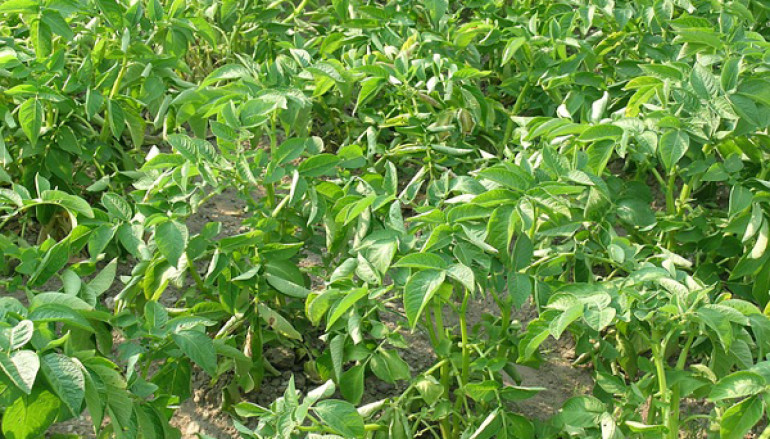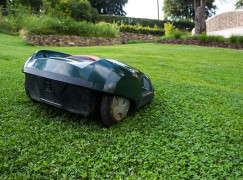

When To Plant Potatoes?
Potatoes are wonderful culinary staples. In any form- be it baked, fried, boiled, or roasted, potatoes taste their best. Fresh potatoes, harvested from your very own kitchen garden can taste simply awesome. Growing potatoes is quite easy, but requires some knowledge. This article tells all about growing potatoes. Your questions such as when to plant Potatoes? How to plant them? How to take care of them? Etc are answered here.
Soil For Growing Potatoes
They grow best when planted in light, loose and well-drained soil. The looser the soil the better the potatoes will grow. Potatoes prefer slightly acidic soil with pH of 5.0 to 7.0. While choosing a place to grow potatoes, remember that they cannot be grown continually at the same spot. The soil for growing this vegetable should be rotated until there has been 2 – 3 years absence of potatoes.
Preparing Potato Seed
Before planting seed potatoes, you need to prepare them. The sprouting process of the seed takes about 4 – 6 weeks. To prepare the seed, keep the potatoes in a sunny, sheltered area. After a few weeks, the potatoes will turn green and sprouts will appear from the eyes of the potato. These eyes will turn into shoots that are used as seeds to grow new potatoes.
Cutting Potato Seeds
Cutting potato seed is not necessary before planting. If you want to cut your seed potato you should see to it that each piece have at least one eye, and should measure 1-inch diameter. Allow the cut seed potatoes to dry for 2 – 3 days before planting. This will help in forming a protective layer against dryness and pest attack. They should be stored in a dry warm place. Small potatoes with shoots need not be cut and can be directly planted. Readymade potato seeds are also available in the market for easy use.
Planting Potatoes
When to plant potatoes? Seed potatoes should be planted 0 to 2 weeks after the last spring frost. After drying of the potato seeds, they should be planted as soon as possible.
How deep do you plant potatoes? Potatoes should be planted in rows 6 – 8 inches deep and 3 feet apart. If you plan to grow baby potatoes you can decrease the spacing between each plant. Before planting, potato fertilizer or organic compost should be mixed well with the soil. Give regular supply of water to the potato plants especially during and after the flowering stage. This is very important for a good crop yield. Potatoes need around 1 – 2 inches of manual watering or rain per week. The initial foliage will turn yellow and will die out but will reappear. At this stage discontinue watering. Now they are ready to harvest.
Earthing Up Potatoes
As the plant grows, you need to cover continually the lower part of it with earth. Use the hoe on the soil around the base of the plant to do the activity. This process is called ‘earthing up’. This provides the plant with enough support, and prevents the tubers from turning green.
Harvesting
Baby potatoes can be harvested 2 – 3 weeks after flowering. Be very careful in harvesting the baby potatoes. You should not disturb the growing process of other potatoes.
Potatoes grow in three main groups – first early, second early and main crops. If you are growing potatoes in your garden, dig only the potatoes that you need for immediate consumption. Freshly harvested potatoes are tasty and delicious to eat.
After 2 – 3 weeks when the foliage again dies, the remaining potatoes can be dug-out and stored for future consumption. During harvest, if the weather is dry, lay the potatoes in the field unwashed for 2 – 3 days. If the weather is wet, then the potatoes should be kept in a dry and covered place. This is necessary to store it for a longer period.
Storing
- Brush the soil away from the harvested potatoes before storing them.
- The potatoes should be stored in a dark, well-ventilated and cool place.
- Cover the potatoes with a thin opaque sheet, and leave them at a place where the temperature is around 40 – 45 degrees Fahrenheit.
- Do not freeze the potato as this may also cause rotting.
- Maintaining humidity is necessary but they should not get wet. You can place water containers near the potatoes.
- Never store potatoes along with apples as the ethylene released can cause decay in the potatoes.
Potatoes can be stored in these conditions for about 2 – 3 months with checking done at regular intervals.
Saving The Seed For Next Plantation
You can save the potato seed for your next plantation. However, it is best to start with fresh seed for best yield.
Problems And Diseases
Potatoes can get affected by different pests and viruses. Below are some of the problems and diseases
- Potato Blight: It is the most common problem. It is a fungal disease that blackens the leaves and stems. Fungal spores develop on it causing the plant to collapse. This can be avoided and the plant can be protected by spraying fungicide and potato blight treatment mixture.
- Slugs: They damage the foliage and potato tubers. Slivery slime can be spotted on the soil and foliage. It can be easily identified and is very common. There are many homemade remedies to prevent it. Example – Beer traps.
- Eelworm: The infected plant turns yellow, the potato yield gets reduced, and the plant eventually dies.
- Blackleg: It is caused when potatoes are grown in prevalent cool, wet and poorly drained soils. It is a bacterial disease that blackens the stems close to the soil. The stems begin to rot and collapse. The best remedy is to remove the infected stem and destroy any infected part.
- A dry weather followed by wetness can also cause many diseases and result in splitting of tubers.
- Wireworms: The roots of the plants infected with wireworms will turn yellow or brown which can be seen and detected easily. Wireworm infestation results if the land is previously used for planting grass.
- Common scab, powdery scab, dry rot, and white spots are other common problems.
If you are a fresher and have taken into account the tips mentioned above, one can easily grow and enjoy fresh potatoes from their garden. Those who lack enough garden space can grow in bags and containers, and thus enjoy the taste of freshly grown potatoes at their own homes!
No related posts.



